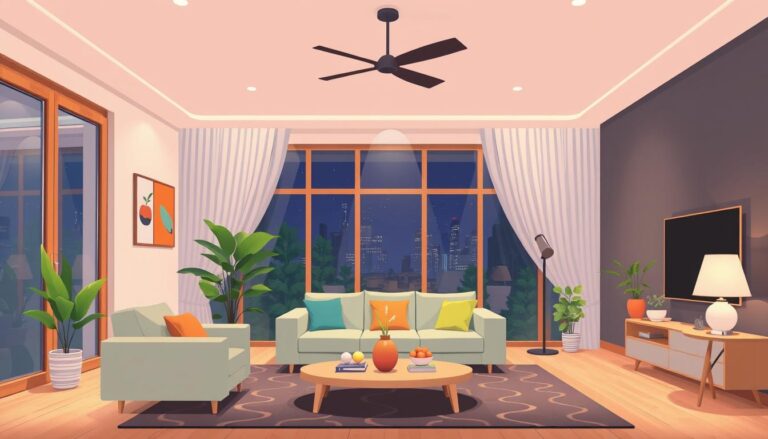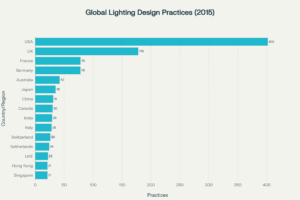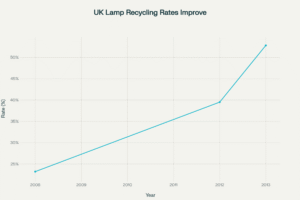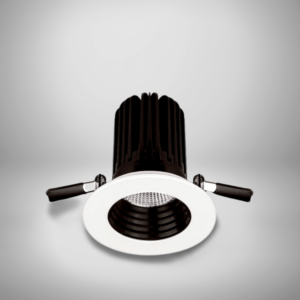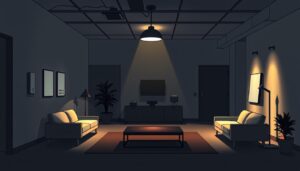Creating the right atmosphere in your home or workspace starts with a well-thought-out interior lighting design. It’s not as simple as merely illuminating a room; it’s about enhancing its character and functionality. Whether you’re working on a residential project or a commercial space, the right fixtures can make all the difference.
We believe that a tailored approach to lighting can transform any area. From setting the mood to improving energy efficiency, the benefits are clear. For instance, LED options not only save energy but also offer longevity, making them a smart choice for any home.
In this guide, we’ll walk you through practical tips and expert insights to help you choose the best fixtures. Whether you’re looking to create a cosy living room or a productive office, we’ve got you covered. Let’s dive in and explore how to elevate your space with the perfect design.
Fundamentals of Interior Lighting
Mastering the essentials of illumination ensures a balanced and functional space. At the heart of any well-lit room is ambient lighting, which provides the base layer of brightness. This foundational light source sets the tone for the entire area, making it essential for creating a welcoming atmosphere.
Natural light plays a crucial role in enhancing any space. It not only brightens a room but also improves mood and energy efficiency. By strategically placing windows or skylights, you can maximise daylight and reduce the need for artificial light sources during the day.

Choosing the right fittings is equally important. Each room has unique requirements, and the fixtures you select should align with its function. For instance, a kitchen benefits from bright, focused fittings, while a living room thrives with softer, diffused options.
Here’s a quick guide to balancing natural and artificial light:
| Room | Lighting Type | Example Fittings |
|---|---|---|
| Kitchen | Task Lighting | Under-cabinet lights, pendant lamps |
| Living Room | Ambient Lighting | Floor lamps, wall sconces |
| Bedroom | Soft Lighting | Bedside lamps, dimmable ceiling lights |
To achieve flawless illumination, consider layering different light sources. Combine ambient lighting with task and accent options to create depth and versatility. This approach ensures your space remains functional and inviting from day to night.
Finally, don’t underestimate the power of natural light. It complements artificial illumination, reducing energy consumption and enhancing the overall ambience. By integrating these principles, you can transform any room into a well-lit, harmonious environment.
Interior Lighting Design Recommendations: Key Principles
A tailored approach to illumination can redefine the essence of any space. By focusing on the specific needs of a room, we can create an environment that not only looks stunning but also feels right. This is where the benefits of a bespoke plan truly shine.
Benefits of a Tailored Lighting Approach
One of the most significant advantages of customising your illumination strategy is its ability to stabilise mood. The right balance of light can make a room feel cosy, energising, or even dramatic, depending on the desired effect. For instance, softer tones in a living area can create a relaxing atmosphere, while brighter options in a workspace boost productivity.
Another key benefit is the ability to highlight unique features. Whether it’s an architectural detail or a decorative element, tailored light draws attention to what makes a space special. Industry expert Sabrina Fiorina notes, “Custom illumination allows you to showcase the personality of a room in ways that generic setups simply cannot.”
Adjusting the style of light also plays a crucial role. Slight changes in brightness or colour temperature can completely transform the character of a space. For example, warm tones in a bedroom promote relaxation, while cooler hues in a kitchen enhance focus and clarity.
Here are some real-world examples where bespoke schemes made a dramatic difference:
- A dining room where pendant lights highlighted a stunning table centrepiece.
- A hallway where wall sconces accentuated textured walls, adding depth and interest.
- A home office where task lights reduced eye strain and improved efficiency.
Ultimately, the right balance of light enhances both practicality and ambience. It’s not just about illuminating a space; it’s about creating an experience that resonates with the people who use it. By investing in a tailored approach, you can transform any area into a harmonious and visually stunning environment.
Understanding Layered Lighting
Layering different light sources can elevate the functionality and aesthetics of any space. By combining ambient, task, and accent lights, we create depth and versatility. This approach ensures a room is both practical and visually appealing.
Ambient Lighting Explained
Ambient lighting serves as the foundation of any well-lit area. It provides overall illumination, making it easier to navigate a room. Common sources include ceiling fixtures, wall mounts, or floor lamps.
This base layer sets the mood. For instance, soft, diffused light creates a cosy atmosphere, while brighter options enhance focus. Adjusting the intensity with a dimmer allows for flexible ambience.
Task and Accent Lighting for Functionality and Ambience
Task lighting is essential for specific activities. In a kitchen, under-cabinet lights ensure shadow-free food preparation. In a home office, directional desk lamps reduce eye strain during work.
Accent lighting highlights unique features, adding visual interest. Picture lights draw attention to artwork, while wall sconces accentuate textured surfaces. This layer is about three times stronger than ambient light to create focus.
Using a dimmer with each layer allows for seamless transitions. For example, bright task lights can shift to softer accents for evening relaxation. This adaptability makes layered lighting ideal for multi-functional spaces.
| Layer | Purpose | Examples |
|---|---|---|
| Ambient | General illumination | Ceiling fixtures, floor lamps |
| Task | Focused activities | Desk lamps, under-cabinet lights |
| Accent | Highlighting features | Picture lights, wall sconces |
By blending these layers, we transform spaces for different purposes. A living room can shift from a bright workspace to a relaxing evening retreat. This approach ensures every area is both functional and inviting.
Designing a Comprehensive Lighting Scheme
A well-planned illumination strategy is the cornerstone of any successful project, whether it’s a self-build, renovation, or extension. By focusing on the details early, we can ensure seamless integration with architectural elements and avoid costly delays.
Planning for Self-Builds, Renovations and Extensions
Early planning is crucial for creating a cohesive scheme. Start by mapping out the space and identifying key areas that require illumination. For extensions, consider how the new area will connect with existing lighting setups.
Collaboration with lighting designers and electricians ensures technical accuracy. They can help you choose the right fixtures and wiring solutions, tailored to your project’s needs. This teamwork prevents last-minute adjustments, saving both time and money.
Here’s a step-by-step guide to developing your scheme:
- Assess the space and define its purpose (e.g., kitchen, living room).
- Choose a mix of ambient, task, and accent lights for versatility.
- Plan table placements and ensure adequate illumination for activities.
- Incorporate energy-efficient options like LEDs to reduce long-term costs.
For example, in a kitchen extension, under-cabinet lights can enhance task areas, while pendant lamps above a dining table create a focal point. This thoughtful approach ensures every corner of the space is both functional and visually appealing.
By investing time in planning, you can avoid common pitfalls and achieve a flawless scheme. Whether it’s a self-build or a renovation, the right strategy transforms your project into a well-lit, harmonious environment.
Architectural vs. Decorative Lighting
The choice between architectural and decorative lighting can define the character of a space. Each serves a distinct purpose, blending functionality with aesthetics in unique ways. Understanding their differences helps in creating a harmonious environment.
Architectural lighting integrates seamlessly with the building’s structure. It enhances the architecture, often hidden or subtly placed to highlight features like beams or alcoves. For example, integrated downlights in a ceiling can provide even illumination without drawing attention to themselves.
In contrast, decorative lighting stands out as a statement piece. It’s designed to be noticed, adding personality and style. Dramatic pendant lights above a dining table or ornate wall sconces can transform a room into a visual masterpiece.
Here’s a quick comparison of the two:
| Type | Purpose | Examples |
|---|---|---|
| Architectural | Blend with structure | Downlights, cove lighting |
| Decorative | Make a statement | Pendant lights, table lamps |
Balancing both types is key. Architectural lighting ensures functionality, while decorative options add flair. For instance, in a living room, recessed ceiling lights can provide ambient illumination, while a striking floor lamp becomes a focal point.
By thoughtfully combining architectural and decorative lighting, we can achieve spaces that are not only well-lit but also full of personality and charm.
Selecting the Perfect Fixtures and Bulbs
Choosing the right fixtures and bulbs can significantly impact both functionality and ambience. With advancements in technology, LEDs have become the industry standard, offering unparalleled energy efficiency and longevity. Understanding key factors like colour temperature and CRI ratings ensures you create a balanced and visually appealing lighting scheme.
Exploring LEDs, Colour Temperatures and CRI Ratings
LEDs are now the go-to choice for modern spaces. They use up to 90% less energy than traditional bulbs and last significantly longer, reducing maintenance costs. Their versatility makes them suitable for various applications, from task light to ambient illumination.
Colour temperature plays a vital role in setting the mood. Measured in Kelvin (K), it ranges from warm white (2200-2700K) to cool white (3000-4000K). Warm tones create a cosy atmosphere, ideal for living areas, while cooler hues enhance focus in workspaces.
CRI (Colour Rendering Index) is another critical factor. A high CRI rating, ideally above 80, ensures colours appear natural and vibrant. This is particularly important in areas like kitchens or art studios, where accurate colour representation matters.
Here’s a quick comparison of bulb types:
| Bulb Type | Energy Efficiency | Lifespan | CRI Rating |
|---|---|---|---|
| LED | High | 15,000+ hours | 80+ |
| Incandescent | Low | 1,000 hours | 100 |
| Halogen | Moderate | 2,000 hours | 100 |
Modern switches and controls further enhance fixture performance. Dimmers allow you to adjust brightness, while smart systems enable remote control and scheduling. These features not only improve convenience but also contribute to energy savings.
By focusing on these elements, you can create a lighting scheme that is both efficient and visually stunning. Whether it’s a residential or commercial space, the right choices make all the difference.
Enhancing Home Ambience with Wall, Pendant and Floor Lamps
The right choice of lamps can transform any room into a welcoming and functional space. Whether it’s a cosy reading nook or a stylish living area, the right fixtures make all the difference. Let’s explore how wall, pendant, and floor lamps contribute to both ambience and practicality.
Wall lights are perfect for creating accent features and focal points. They add depth to a room by highlighting architectural details or artwork. For example, sconces placed either side of a mirror can enhance a bathroom’s functionality while adding a touch of elegance.
Table lamps offer versatility, providing both ambient and task illumination. They’re ideal for creating a warm glow in living rooms or focused light for reading. A well-placed lamp on a side table can also serve as a decorative element, tying the room’s décor together.
Floor lamps add height and visual interest to a space. They’re particularly useful in areas where ceiling fixtures aren’t practical. For instance, a tall lamp next to an armchair creates a perfect spot for reading, while also adding a stylish touch to the room.
Here are some practical examples of how these lamps can enhance your home:
- Use wall lights to frame a fireplace or artwork, creating a striking focal point.
- Place table lamps on bedside tables for soft, adjustable light that promotes relaxation.
- Position floor lamps in corners to brighten dark areas and add a sense of height.
Integrating these styles with your overall décor is key. Choose fixtures that complement your furniture and colour scheme. For example, a modern floor lamp pairs well with minimalist interiors, while a vintage table lamp adds character to a traditional setting.
By thoughtfully selecting and placing wall, pendant, and floor lamps, you can create a harmonious and inviting environment. Whether it’s for reading, relaxing, or entertaining, the right lamps elevate both the look and feel of your home.
Integrating Smart Lighting Technologies
Smart lighting technologies are transforming how we interact with our spaces, offering both convenience and efficiency. These systems allow us to control illumination with ease, creating customisable scenes that adapt to our needs. Whether it’s adjusting brightness for a cosy evening or setting up dynamic colours for a party, the possibilities are endless.
One of the standout features of smart systems is their ability to integrate with home automation. Through wall panels or mobile apps, you can manage your lights from anywhere. This level of control not only enhances convenience but also contributes to energy savings. For instance, lights can be programmed to turn off automatically when a room is unoccupied.
Convenience, Efficiency and Modern Controls
Modern controls are at the heart of smart lighting. With features like dimmers and schedulers, you can tailor your illumination to match daily routines. Morning lights can gradually brighten to wake you up, while evening settings can mimic sunset to prepare you for sleep. These ideas make smart lighting a practical choice for any home.
Energy efficiency is another major benefit. Smart systems use advanced sensors and timers to reduce unnecessary usage. For example, motion sensors can trigger lights only when needed, cutting down on electricity bills. This makes them a cost-effective investment in the long run.
Here are some practical ideas for integrating smart lighting:
- Use adjustable scenes to create different moods for relaxation or entertainment.
- Program lights to simulate presence when you’re away, enhancing home security.
- Pair smart bulbs with voice assistants for hands-free control.
By embracing these technologies, we can create spaces that are both functional and visually appealing. Smart lighting is not just a trend; it’s a step towards a more connected and efficient future.
Room-by-Room Lighting Strategies
Every room in your home has unique needs when it comes to illumination, and tailoring your approach ensures both functionality and style. From cosy living areas to practical kitchens, the right setup can transform how you use and enjoy each space. Let’s explore tailored strategies for high-use areas, ensuring every corner of your home shines.
Tips for Living Rooms, Bedrooms and Bathrooms
In the living room, focus on creating a versatile atmosphere. Combine ambient sources like floor lamps with task options such as table lamps for reading. This layered approach allows you to adjust the mood for socialising or relaxation. For example, dimmable ceiling lights can set a warm tone for evenings, while brighter options suit daytime activities.
Bedrooms benefit from softer, adjustable illumination. Bedside lamps with warm tones promote relaxation, while dimmers let you control brightness for different times of the day. Avoid harsh overhead lights, as they can disrupt the calming vibe essential for restful sleep.
Bathrooms require bright, even illumination for safety and practicality. Recessed fittings above mirrors reduce shadows, making tasks like shaving or applying makeup easier. Consider adding a waterproof LED strip for a modern touch and enhanced visibility.
Customising Zonal Illumination in Open-Plan Kitchens
Open-plan kitchens often serve multiple purposes, from cooking to dining and socialising. Zonal strategies help demarcate these areas effectively. For the cooking zone, under-cabinet fittings provide focused task illumination, while pendant lamps above the dining table create a distinct focal point.
Natural light plays a crucial role in open spaces. Position windows to maximise daylight, reducing the need for artificial sources during the day. Combine this with adjustable fittings to balance brightness as the day progresses.
Here’s a quick guide to zonal setups:
- Cooking Zone: Under-cabinet lights for task illumination.
- Dining Area: Pendant lamps suspended 30-34 inches above the table.
- Social Space: Soft, ambient sources like wall sconces or floor lamps.
By thoughtfully planning each zone, you can create a cohesive yet functional space that adapts to your daily life.
Practical Lighting Tips for Home Extensions and Renovations
Effective illumination planning is key to transforming home extensions and renovations into functional, stylish spaces. By focusing on the details early, we can ensure seamless integration with architectural elements and avoid costly delays. Here’s how to approach it step-by-step.
Start by mapping out the space and identifying key areas that require illumination. For extensions, consider how the new area will connect with existing setups. Collaboration with electricians ensures technical accuracy, preventing last-minute adjustments that can disrupt timelines.
Here are some practical tips to ensure your plans are executed seamlessly:
- Assess the space and define its purpose (e.g., kitchen, living room).
- Choose a mix of ambient, task, and accent lights for versatility.
- Plan placement relative to new glazing and furniture layouts.
- Incorporate energy-efficient options like LEDs to reduce long-term costs.
Thoughtful planning enhances both functionality and aesthetics. For example, in a kitchen extension, under-cabinet lights can improve task areas, while pendant lamps above a dining table create a focal point. This approach ensures every corner is both practical and visually appealing.
Here’s a quick guide to key considerations:
| Area | Illumination Type | Example Fixtures |
|---|---|---|
| Kitchen | Task Lighting | Under-cabinet lights, pendant lamps |
| Living Room | Ambient Lighting | Floor lamps, wall sconces |
| Bathroom | Bright Lighting | Recessed fittings, LED strips |
By investing time in planning, you can avoid common pitfalls and achieve a flawless scheme. Whether it’s a self-build or a renovation, the right strategy transforms your project into a well-lit, harmonious environment.
Specialised Lighting Solutions for Bathrooms and IP Ratings
Bathrooms and wet areas demand precise lighting solutions to meet safety and performance standards. Understanding IP ratings is essential for selecting fixtures that can withstand moisture and ensure compliance with regulations. Let’s explore how to navigate these requirements effectively.
Understanding IP Ratings and Safe Installations
IP ratings, or Ingress Protection ratings, indicate a fixture’s resistance to dust and water. For bathrooms, these ratings are crucial to prevent electrical hazards. The higher the rating, the better the protection against moisture.
Bathrooms are divided into specific zones, each requiring different IP ratings:
- Zone 0: Inside the bath or shower. Fixtures must have a minimum rating of IP67.
- Zone 1: Above the bath or shower. Fixtures need at least IP65.
- Zone 2: Areas within 60cm of water sources. IP44 is the minimum requirement.
- Outside Zones: Areas beyond 60cm from water sources. Standard fittings are acceptable.
Choosing the right fixtures for each zone ensures safety and longevity. For example, IP65-rated recessed lights are ideal for shower areas, while IP44-rated wall sconces work well near sinks.
Here’s a quick guide to selecting fixtures based on zones:
| Zone | IP Rating | Example Fixtures |
|---|---|---|
| Zone 0 | IP67 | Submersible LED strips |
| Zone 1 | IP65 | Recessed ceiling lights |
| Zone 2 | IP44 | Wall sconces, mirror lights |
| Outside Zones | Standard | Ceiling pendants, floor lamps |
Real-world examples highlight the importance of compliance. In a recent renovation, a homeowner installed IP65-rated spotlights in the shower area, ensuring safety and durability. Similarly, IP44-rated mirror lights improved functionality in the vanity area.
Integrating specialised solutions in renovations not only enhances safety but also adds value to the property. By adhering to safety standards, we create spaces that are both functional and secure.
Merging Natural and Artificial Lighting for Optimal Effects
Blending natural daylight with artificial sources can transform any space into a harmonious environment. By combining these elements, we create a balanced atmosphere that enhances both functionality and mood. This approach is not just about illumination; it’s about crafting a space that feels inviting and efficient.
One effective strategy is to maximise natural light through large windows or skylights. These features allow daylight to flood the room, reducing the need for artificial sources during the day. Pairing this with strategically placed fixtures ensures consistent brightness as the sun moves across the sky.
For example, in a living room, floor-to-ceiling windows can bring in ample daylight, while dimmable ceiling lights provide flexibility for evening use. Similarly, in a kitchen, skylights paired with under-cabinet fittings create a bright, functional workspace.
A balanced approach also offers practical benefits. Using natural light reduces energy consumption, while artificial light ensures consistent illumination when needed. This combination not only lowers electricity bills but also enhances the overall ambience of the space.
Here are some applications across different room types:
- Living Room: Large windows with adjustable floor lamps for evening relaxation.
- Kitchen: Skylights combined with task fittings for food preparation.
- Bedroom: Blackout curtains with soft bedside lamps for a restful atmosphere.
By thoughtfully merging natural and artificial sources, we can create spaces that are both functional and visually appealing. This approach ensures every room adapts to your needs, from day to night.
Conclusion
Creating a well-balanced lighting scheme is essential for any space. By combining natural and artificial sources, we can achieve both functionality and style. This approach not only enhances the ambience but also improves energy efficiency.
Throughout this guide, we’ve explored the importance of layered setups and tailored solutions. From choosing the right fixtures to understanding IP ratings, every detail matters. These strategies ensure your space is both practical and visually appealing.
We encourage you to apply these insights to your own projects. Whether it’s a home extension or a simple renovation, the right lighting can make all the difference. Start planning today and transform your space into a harmonious environment.
For more tips and expert advice, feel free to explore our resources. Let’s work together to create spaces that shine.
FAQ
What are the key principles of a tailored lighting approach?
A tailored lighting approach focuses on creating a balance between functionality and aesthetics. It involves layering ambient, task, and accent lights to suit specific needs and enhance the overall mood of a space.
How does layered lighting improve a room’s functionality?
Layered lighting combines ambient, task, and accent sources to provide versatility. Ambient lights set the base, task lights focus on specific activities, and accent lights highlight features, creating a dynamic and practical environment.
What should I consider when planning lighting for a home extension?
When planning for extensions, think about the room’s purpose, natural light sources, and the placement of fixtures. Incorporating dimmers and energy-efficient LEDs can also enhance flexibility and sustainability.
What’s the difference between architectural and decorative lighting?
Architectural lighting is built into the structure, like recessed ceiling lights, while decorative lighting includes standalone pieces like pendant or floor lamps. Both styles can work together to create a cohesive scheme.
How do I choose the right colour temperature for my space?
Warm white (2700K-3000K) creates a cosy atmosphere, ideal for living rooms and bedrooms. Cool white (4000K-5000K) is better for task-oriented areas like kitchens or workspaces.
Can smart lighting systems save energy?
Yes, smart systems allow you to control lights remotely, set schedules, and adjust brightness, reducing energy consumption. They also integrate with other smart home devices for added convenience.
What are the best lighting strategies for open-plan kitchens?
Use zonal lighting to define areas. Combine pendant lights over islands, under-cabinet task lights, and ambient ceiling fixtures to create a balanced and functional space.
Why are IP ratings important for bathroom lighting?
IP ratings indicate a fixture’s resistance to moisture and dust. In bathrooms, higher IP-rated lights ensure safety and durability, especially near water sources.
How can I merge natural and artificial lighting effectively?
Position fixtures to complement natural light sources, like windows. Use dimmers and adjustable fittings to adapt to changing daylight levels, maintaining a consistent and comfortable ambience.
What are the benefits of using LED bulbs?
LEDs are energy-efficient, long-lasting, and available in various colour temperatures. They reduce electricity costs and are ideal for both residential and commercial applications.
